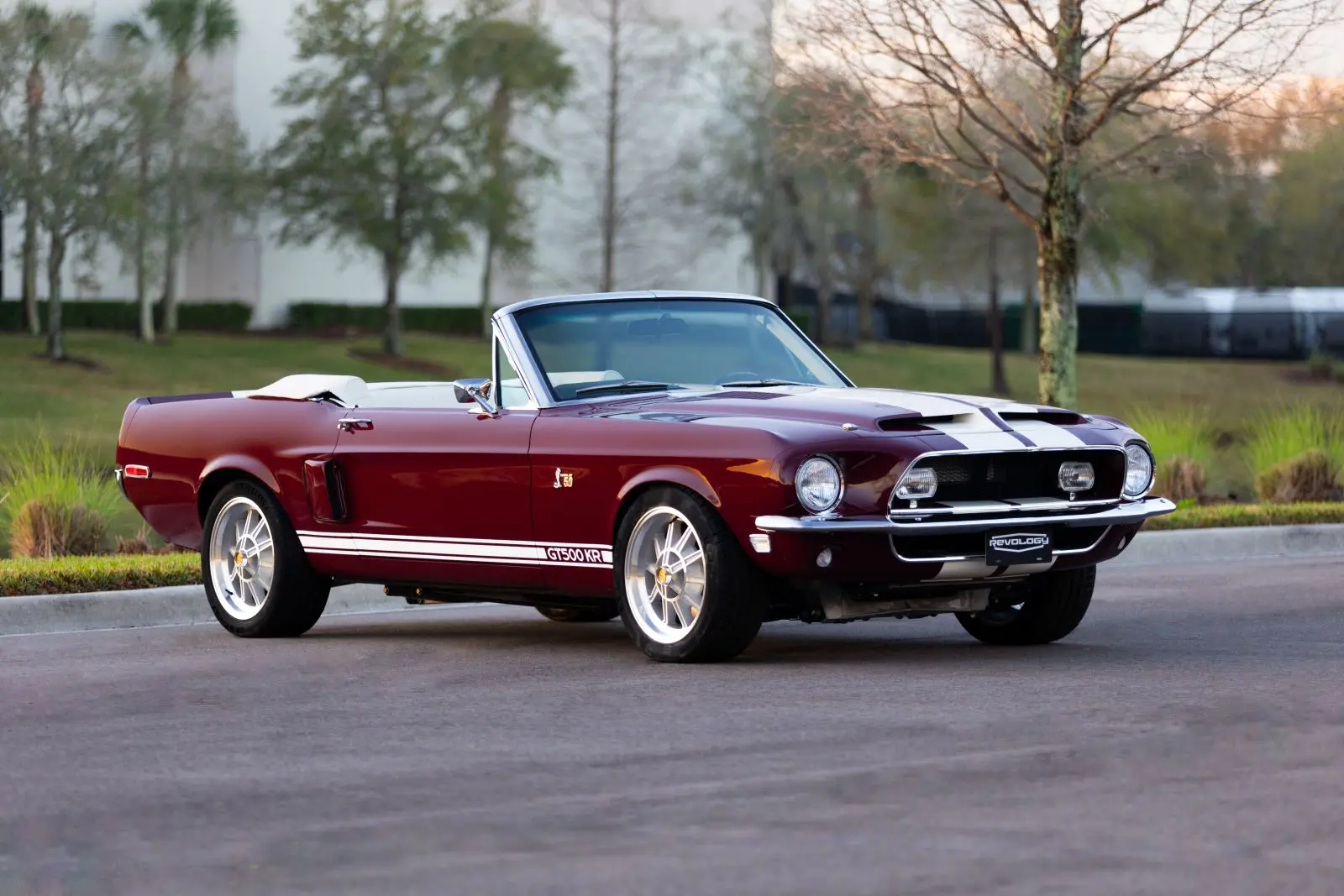
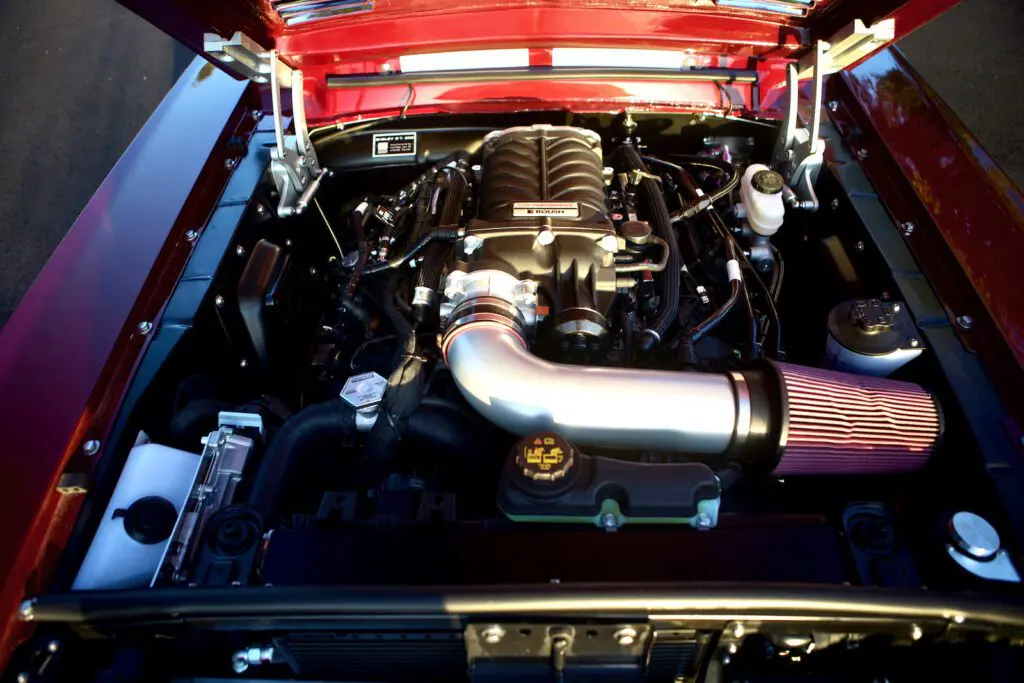

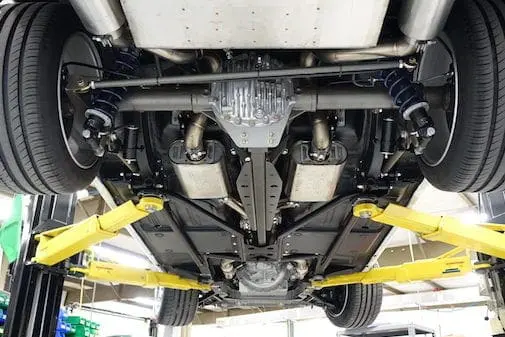

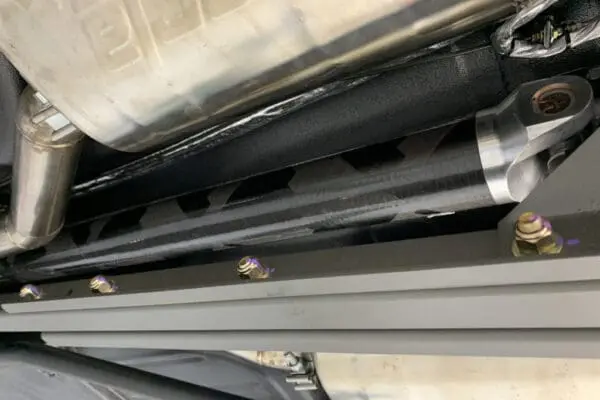

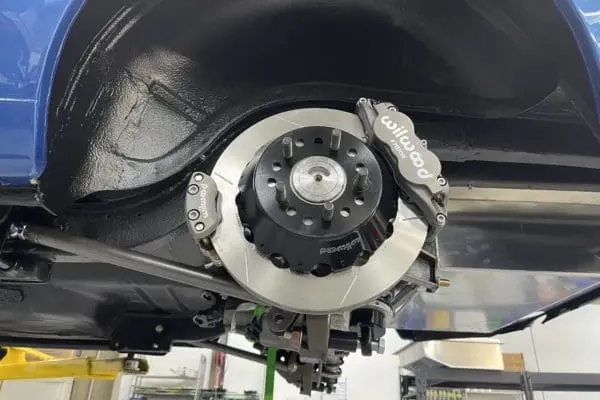

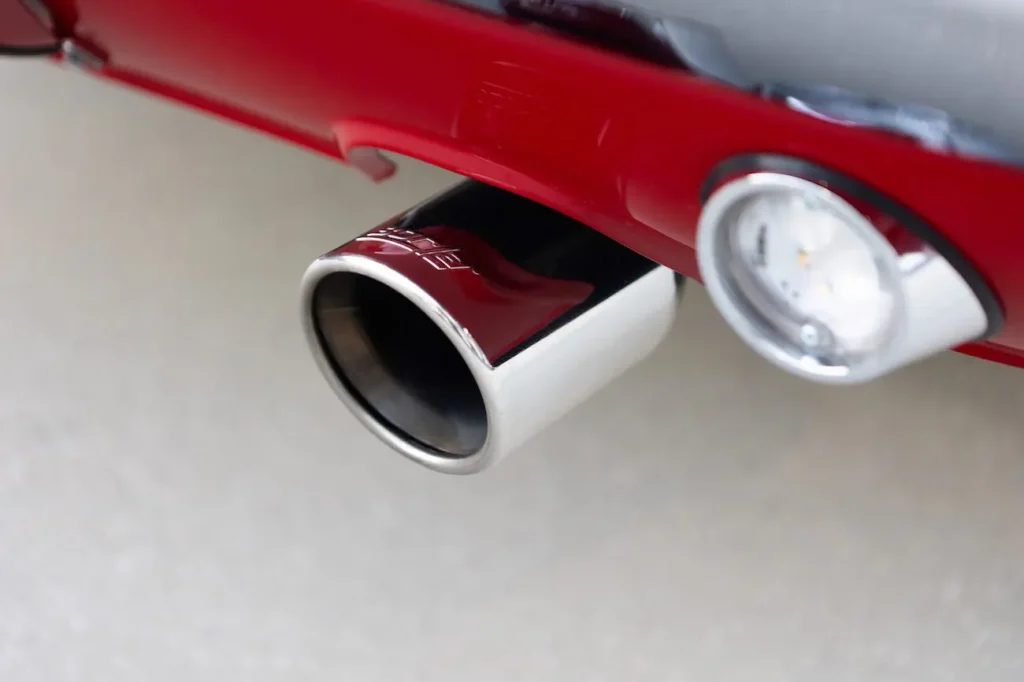

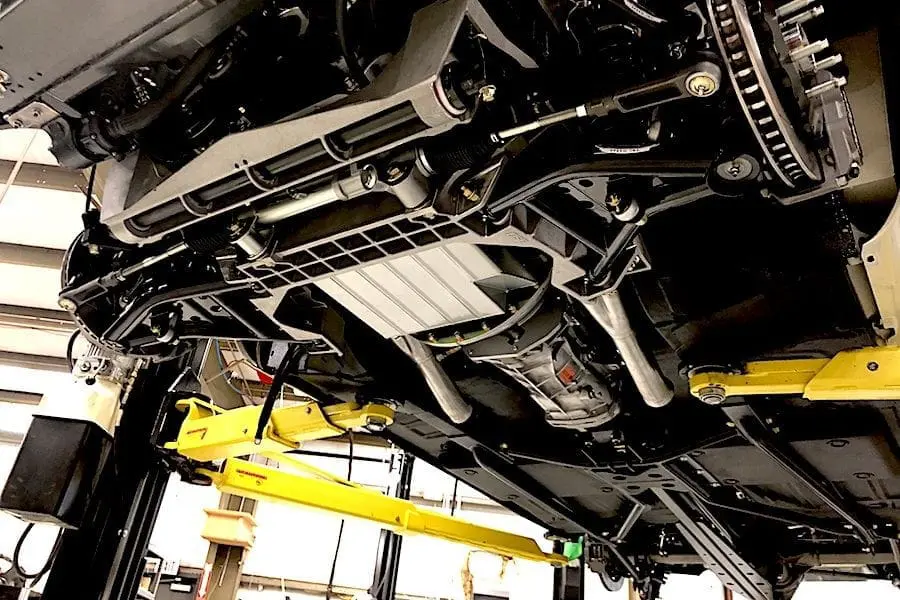

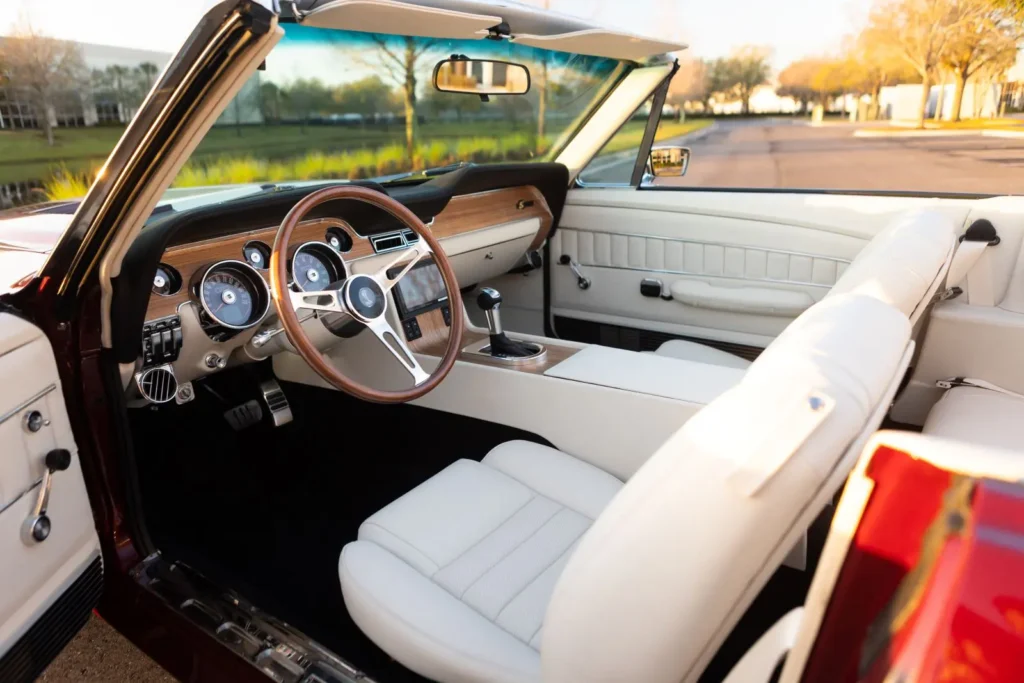


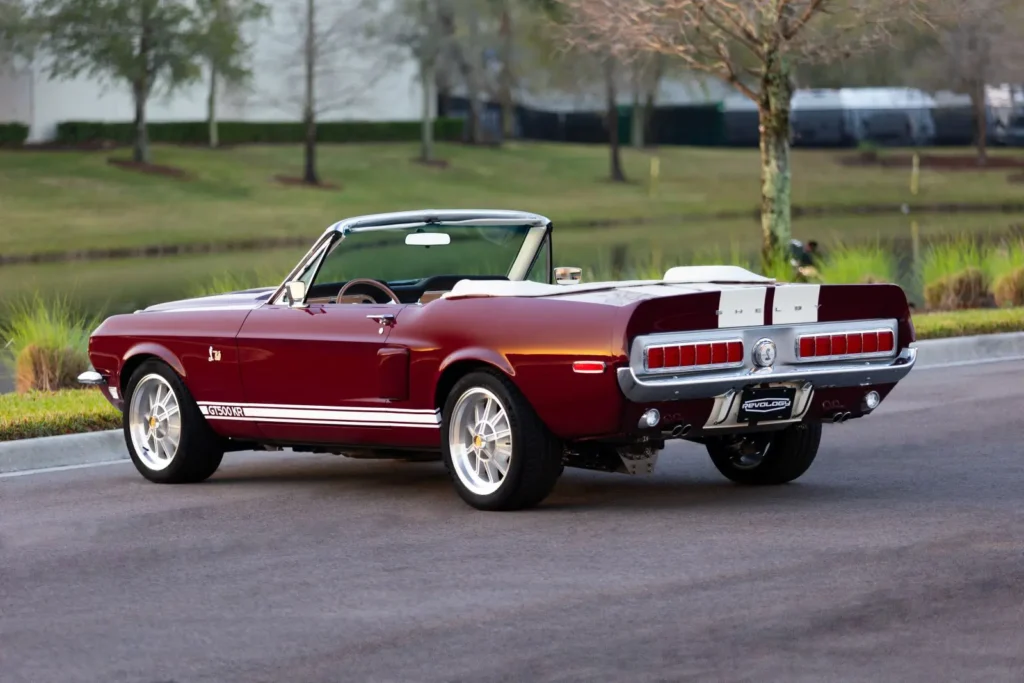




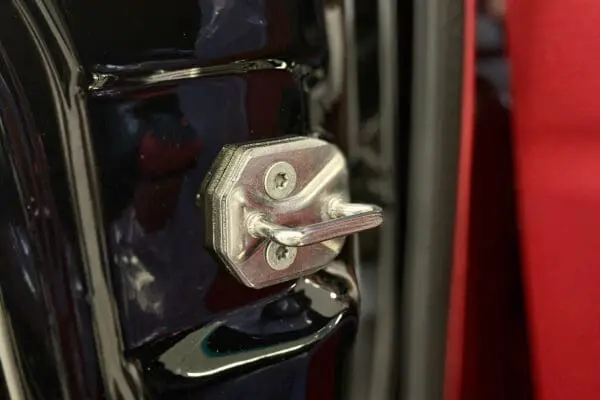

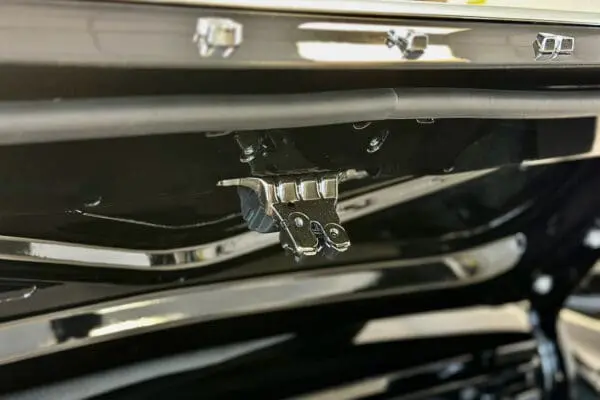

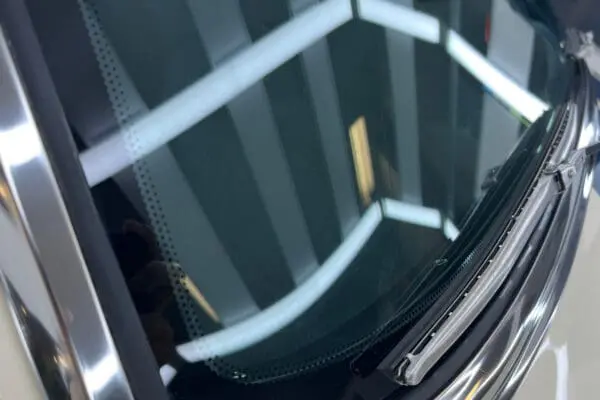

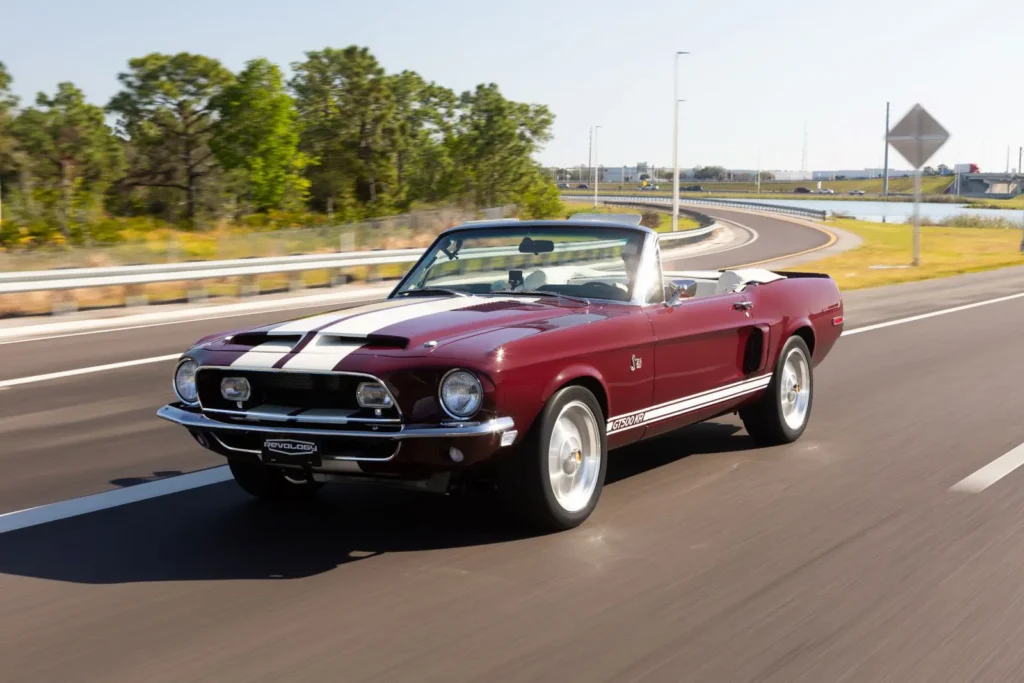

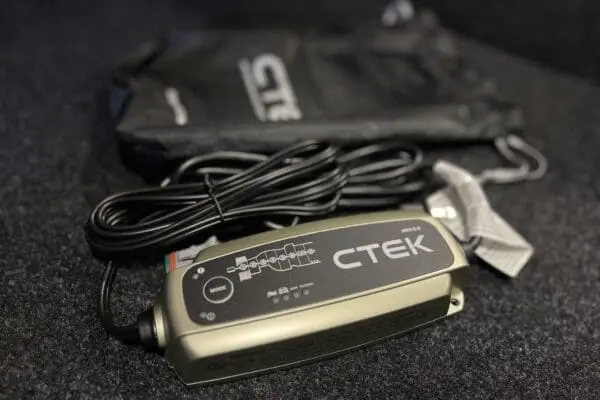

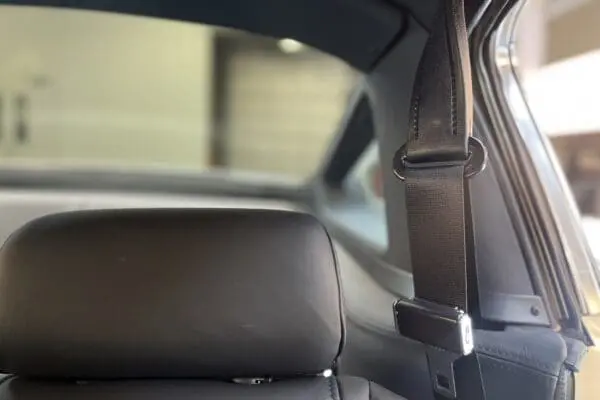

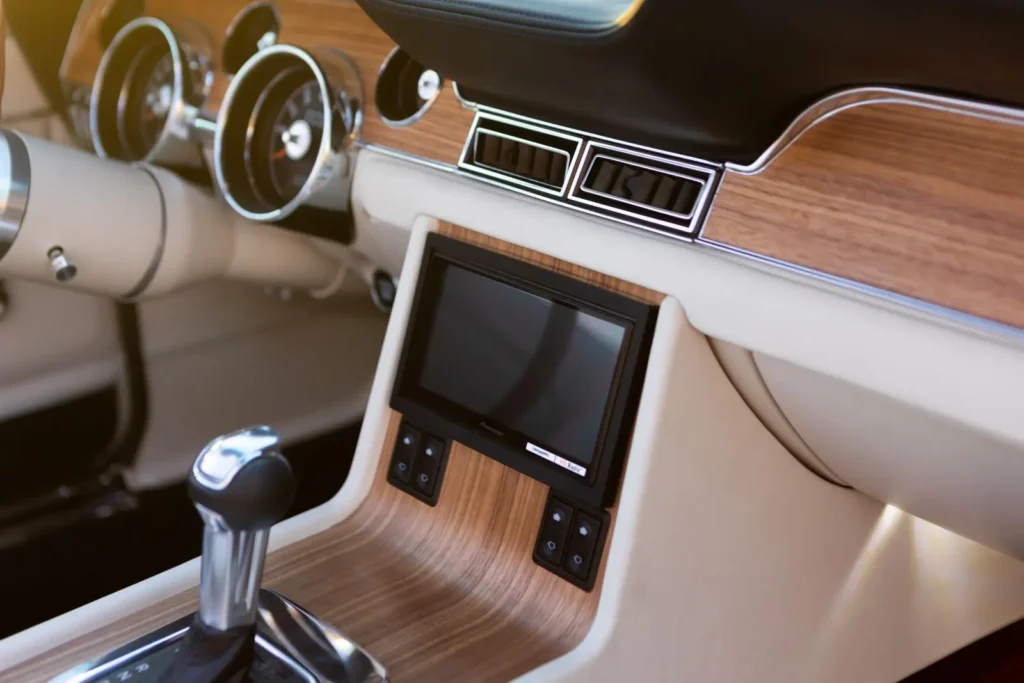




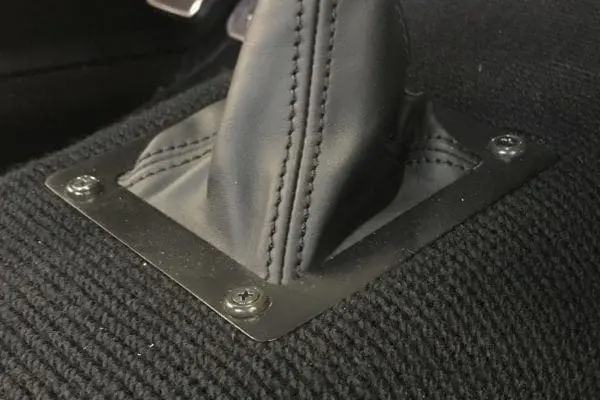




Transcript +
Hi, I’m Tom Scarpello of Revology Cars and this is car number 212, our first ever 1968 Shelby GT500 KR Convertible in Royal Maroon with Wimbledon White stripes and Ivory Nappa leather interior. Today, I’m going to take you on a walk around of this car and we’re going to go for a drive. Let’s get started.
So, we introduced our 68 GT500KR Fastback last fall. The convertible is very similar, obviously it’s just a convertible body style. Now for us, this represents the first of the 67/68 bodies that we’ve built. So, up until this point, we’ve only done three bodies: the 65/66 Fastback, 65/66 convertible, and the 67/68 Fastback. So now we add a fourth body to the mix. We build the bodies in-house. We’ve been doing this for several years. Building the bodies in-house allows us to control the dimensions rather than taking an existing body and cutting it, modifying it. We just build it the way that we want it from the beginning. It’s been working great for us. Ever since car 64, this is now car 212. So, a lot of Revology cars out there with the bodies built in-house by Revology.
Actually, in 1968, you had an interesting lineup. The entry Shelby was a GT350. There was a convertible and a Fastback. And then the first part of the year was a GT500 convertible and Fastback. And then the GT500KR, which basically introduced the Cobra Jet engine, which was the most powerful engine ever put in a Mustang up until that point. The 68 KR has a unique front end. This is a big departure from 1967. The 67 had a one-piece front fascia. In 1968, it’s a four-piece front fascia, and that was really designed for quality to be able to produce consistent quality parts and improve the fit. Shelby did have a lot of challenges with the fit of the body panels in 1967. The 68 KR really addressed that, so you got a much better gap and flushness on all the fiberglass parts.
So, on the front end, the grill has rectangular fog lights and single headlamps. Obviously, the headlamps are LED, as are the turn signals. With the rally Shelby GT500 KR at the side, this car rides on the 17 by 8, 10-spoke Shelby wheels. GT500 KR side stripe with the correct font, which is different from the 67. The original fender badge was a Cobra Jet 428. We’ve tweaked that a bit since we’re using a 5.0L Coyote engine, so it’s Cobra Jet 5.0. The side scoop is similar to what was on the 67, but it is different because the quarter panel’s different. The 68 has a unique side scoop. 1968 was the first year for the side marker reflectors and lamps, so you have that on our 68 KR. At the rear of the car, the 68 featured the Shelby letters on the deck lid. The tail lamp panel is unique; the tail lamps actually are from a 1965 Thunderbird. So if you go back and look at pictures of a 65 Thunderbird, you’ll recognize these tail lamps. The fuel cap for the KR is unique, reflecting the change to the Cobra Jet engine. And then this car is equipped with the quad exhaust tip, so at the rear, really very similar to the original. In fact, really very few tip-offs that you’re not looking at an original. Clearly, the wheels are larger; the original wheels were 15 inches, these are 17. You’ve got your passenger side roof mirror. You don’t have a key cylinder on the passenger side door because you’ve got a remote keyless entry. Really, other than that, most people would not be able to tell the difference between this and a 68 KR. Now, of course, when you drive it, it’s a totally different story.
Now, this car is equipped with Ivory Nappa leather. This is a Mercedes Nappa Leather. So it’s OEM leather. It will resist sun loading, abrasion. It’s very durable but still looks and feels great and has that great leather smell. This car is equipped with the genuine Walnut veneer and black dash pad, black carpet. So in a very original looking interior. Obviously, the console touch screen gives it away a bit, but it looks so integrated that it could have been original had that technology been available back in 1968. Let’s go for a drive.
All right, so those of you that have seen a lot of these videos probably heard me say we’re not a hot rod shop, we’re not a custom car builder, you know, we build real cars you can drive. And we think that’s important because, you know, cars are meant to be driven. You know, looking at them is great, but they’re really meant to be driven. And that’s where we really put the majority of our emphasis in our vehicle development is on driving dynamics. So, it’s interesting that we had a very special guest from the Hot Rod World, Chip Foose, was visiting Orlando today and he stopped by and we were able to take him out for a test drive in this car, car number 212, and get a few impressions from him. It’s like a collision of two worlds, the OEM world and the hot rod world. They’re just like two totally different solar systems or galaxies even. It’s like they just don’t crossover. The OEM world is all about doing things the same way every time, and the hot rod world is all about making something unique, something different, something expressive. The OEM world is all about functionality and reliability. The hot rod world is all about creativity and expression. If you’re a designer, you can express yourself, your art, through automobiles. And Chip is a brilliant designer.
The thing is, the cars that we build, the design’s already established. We’re not designing a new car. We’re taking an iconic design from years ago and updating the functionality. We do our own interpretation of these cars. And for us, you know, our expression, our art, our contribution is the way the car drives. It’s the vehicle dynamics, it’s the functionality, it’s just as much part of the art as is the design, the aesthetic. You know, that’s our philosophy. This is our 212th production vehicle. Cool. How long have you been in business? Uh, it’ll be 10 years April 1. Congratulations. Thank you, thank you very much. Let’s go for a drive. All right.
You’re in the driver’s seat. So, we don’t build hot rods, you know, we build cars that you can actually drive. We can drive hot rods. Well, I guess that you’d use more as a modern car, like with less compromise. We tried to make it behave as much as a OEM car as we can, right? So even the calibration of the engine is a stock calibration. The suspension tuning, try to get a balance of performance and handling and ride comfort. Whose exhaust are you using? B. They used to do their design work back in the 80s. So, what’s your initial impression? Runs good, drives nice. Okay. We were advised that you’d do a sketch for us, yeah. And so we’ve got another car, it’s a 65 Fastback, and we thought maybe that you could take some liberties with it. So we did a design brief and it’s on the table back at the factory. Imagine it’s a 65 GT350R with all modern suspension, so it’s a wider track and it’ll obviously need to have, you know, wider fenders and some way to accommodate that modern suspension design but try to keep, you know, the original aesthetic. We thought maybe that would be a fun thing to do. Cool. Drive is nice, thanks. Very solid. Thank you. Yeah. The objective is that you get in it, you drive it 50 feet and you just like, yeah, this is a real car and I could get in it and I could drive to California and I’d be comfortable. That’s the objective.
That should be your badge. Well, you know, we’re always debating about that because, you know, people want authenticity. You know, we do have a horn button that has the Revology R logo and we give people the option of selecting it. It’s maybe half and half. You know, this is a client car, the client wanted the Shelby snake, yep. You know, we have a few little Revology logos kind of dotted around the car, but it’s not really very prominent, yeah. What paint are you using? Glazer 55 line, 55, yeah, yep, cool. That’s my favorite. Whose suspension are you using? The front is a DSSE Aluma frame, yeah. And the rear, the original design was from TCI, their three-link, yep. But we’ve modified it so much, it really doesn’t have much in common with that design anymore other than it’s a three-link with a torque arm. We use a Ford 8.8 rear, you know, theirs was designed for a 9-inch. The reason we use the 8.8 is it’s a factory gear set, right? You know, every single one of them is exactly the same. With the aftermarket parts, we end up just having a lot of variability car to car. We can’t run production unless we have consistent parts. We use all OEM cooling systems. We redesigned the front structure so that it could accommodate the current Mustang radiator fans. You know, the cooling system is bulletproof. We’ve never had a cooling issue, ever. We’ve got cars in Qatar, Saudi Arabia, nice. The hottest places on Earth. We really make a lot of effort to use OEM components whenever we can. Smart. Nice car, thank you.
It was really cool to have Chip in the car. He’s a little tight-lipped about, you know, his opinion. It’s like not telling me how great it is or anything. But geez, I mean, this car is just awesome. I know, yes, I’m biased. But on the other hand, I do this every day for my job and I’ve driven every one of these cars for the last 10 years. So, you think that I would eventually kind of get, you know, a bit, I don’t know, it would become normal. But, ah, it’s no, this is awesome. It’s just really fun. It’s great that the hot rod world exists. We need that. We need that creativity. We need that expression. But we can’t drive those cars every day. So we have the OEM world that gives us our everyday transportation that we need. And we need to have that at an affordable price and have it serviceable and last a long time. And then we have Revology Cars, which kind of takes elements from both of those worlds and kind of creates our own world somewhere in the middle, the white space, as the marketers like to say. The white space. Found some white space. We’re in the white space. That’s us.
Subscribe to our newsletter to learn about our latest news and updates.
Notifications